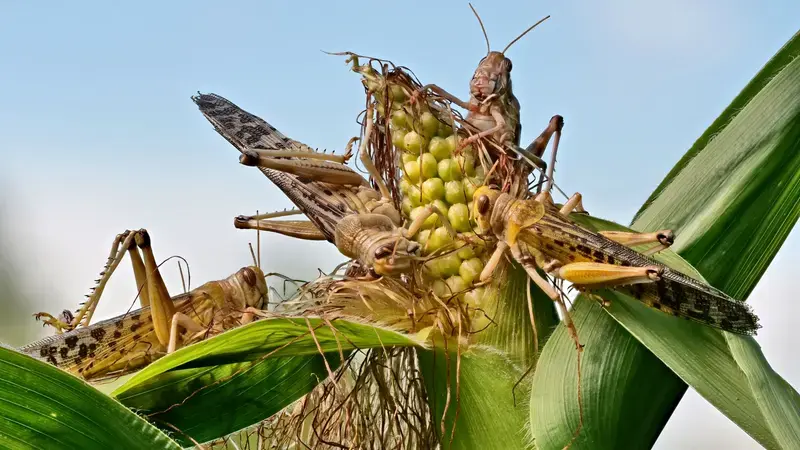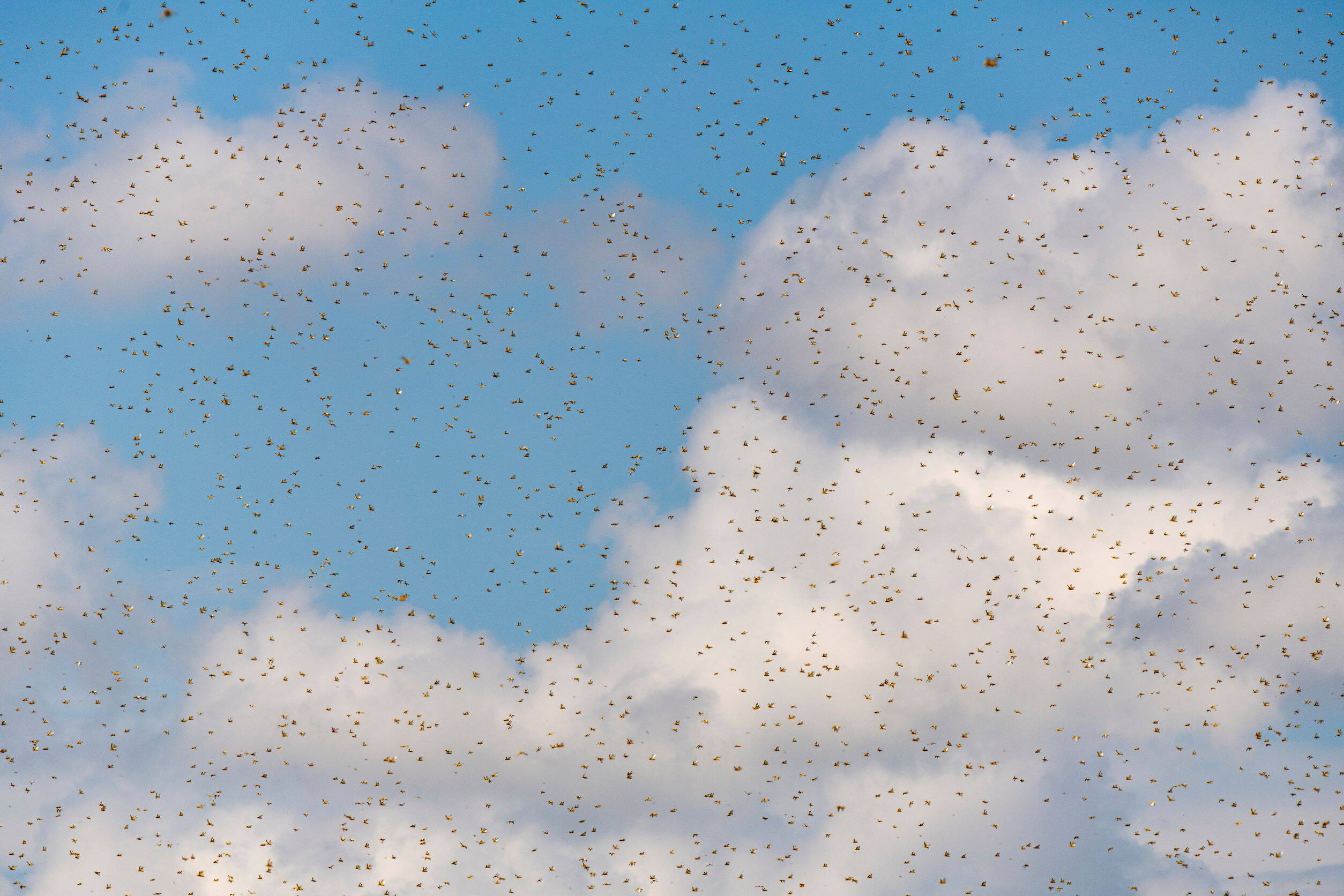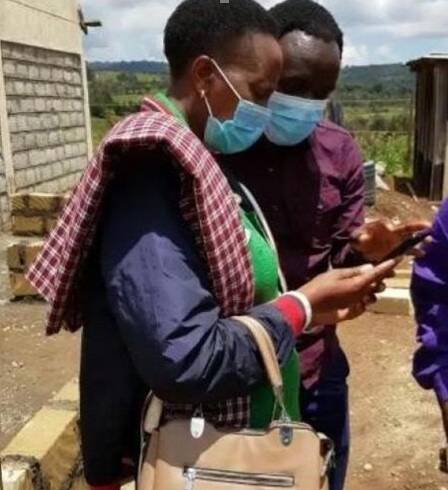Farmers Can Get Ahead of Locust Swarms

ICARDA is grateful to the CGIAR Platform for Big Data in Agriculture and JDC-GRID for funding this project, and to TomorrowNow.org, Tomorrow.io, Digital Green, Kenarava Group Ltd, and The Bug Picture for their partnership.
----------------------------------

By Georgina Campbell Flatter, Executive Director of TomorrowNow, a visionary non-profit transforming African weather systems so that EVERYONE can survive and thrive in our changing climate.
On January 17, 2020, the United Nations activated an emergency protocol in Kenya and Ethiopia, warning their populations about the onset of the worst desert locust infestation in decades. For months, swarms of desert locusts, some larger than New York City, swooped down on lush fields, devouring every single blade of grass and ripe grain in sight.
Between 2019 and 2021, successive outbreaks damaged the livelihoods and food security of millions of people across East Africa, the Arabian Peninsula, and the Indian Subcontinent. In Madagascar, an island country devastated by four decades of drought, locust infestations amplified the food security crisis. Today, 1.3 million Malagasy people face severe hunger, and another 30,000 suffer from life-threatening famine.
Climate experts are adamant: extreme weather events, especially heavy rainfall occurring after a prolonged period of drought, create ideal conditions for locusts to breed, proliferate, assemble, and form swarms that can travel up to 150 kilometers in a single day.
So how can we protect people from this menace, especially farmers, as climate change intensifies?
A partnership between TomorrowNow.org and the International Center for Agricultural Research in the Dry Areas (ICARDA) is confident it has the answer. ICARDA has over four decades of experience developing science-based agronomic solutions for farmers and pastoralists across the drylands, home to 20 percent of the world's population most at risk from locust attacks.
With additional support from CGIAR, JDC-GRID, 'farmer-first' innovators, and climate security company tomorrow.io, the partnership is creating a holistic response to the spread of desert locusts that also reflects the specific needs of farmers.
The response is community-based and informed by local insights. It helps farmers make smarter, crop-saving decisions and integrates innovative weather intelligence technology and TomorrowNow.org's rural networks to develop a 360-degree early warning system that strengthens farmer preparedness.
- An improvement over conventional response
This approach addresses the weaknesses and limitations of current control measures, which have tended to be primarily reactive rather than proactive.
This has meant that farmers do not stand much chance of saving their crops if swarms descend on their crops – even when they try to disperse them by banging on pots and pans, a response previously tried in Kenya.
If, instead, farmers received timely information that locusts were heading their way, coupled with actionable advice on limiting losses, they could, for example, decide to harvest and safely store their grains and animals or cover their fields with nets to protect the bulk of their crops.

They could even prepare a 'locust catching task force,' ready to harvest the locusts at night when immobile, and later process them as highly nutritious animal feed or manure. In other words, turn a climate crisis into an opportunity for their farms.
Weather indicators can give us crucial clues on locust activities. The wind is the strongest predictor of swarm movement and direction - locusts do not fly against the wind - while rain and moisture levels can inform us of potential egg-laying sites. Weather intelligence can trigger timely advice, improve response time, and save crops.
- A farmer-centric system
With this project, we want to ensure that weather intelligence is localized and gets into the hands of farmers. This is why we start with the farmers. We have learned from farmers what, when, and how they want to receive warnings and insights as users and beneficiaries of weather intelligence.
Our innovative, 360-degree early warning tool has four main components: automated locust alerts generated by state-of-the-art weather models and displayed on a web dashboard; rapid decision-making enabled by weather intelligent recommendations; warnings shared by any digital channel; and a catalog of digital content made for and by farmers that provides practical, on-farm locust advice.

Additionally, we have created a feature that embeds local sightings, crowdsourced directly from the field by mobile phones through 2G or 3G channels, which over time will feed into the weather engine to improve prediction.
We built and tested a prototype with Kenyan farmers during a virtual hackathon. Over the past year, we have developed local partnerships and conducted on-farm activities that have allowed us to augment the platform and weather insights for the benefit of farming communities.
TomorrowNow (formally ClimaCell.org) and ICARDA won the 2020 CGIAR Inspire Challenge Awards and continue to strengthen local partnerships as they move to the next phase.
While the locust crisis seems to be slowing down, millions of farmers are still reeling from the destruction it caused. To make sure that people no longer live in fear of the next attack, we must unlock the power of weather intelligence and place it in the hands of farmers.
That way, farmers will get ahead of the swarms.
